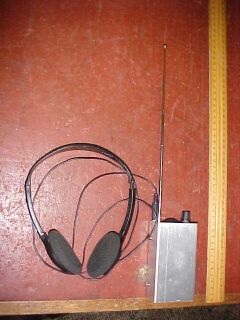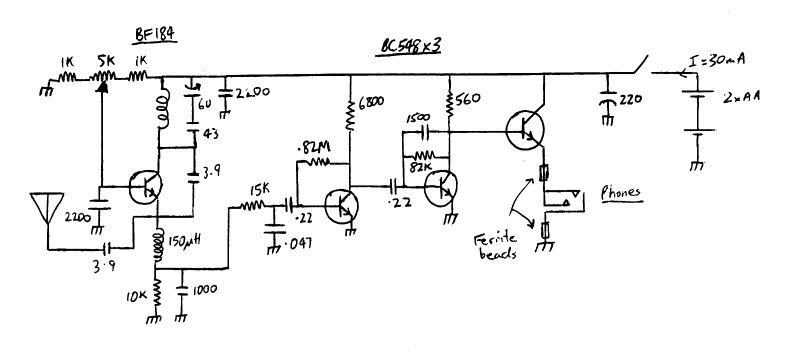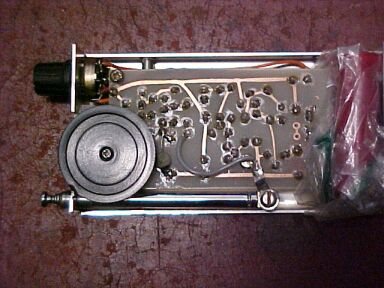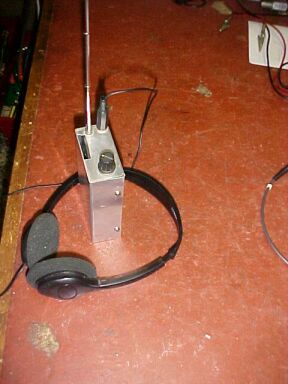

This is a pocket sized receiver I built
in 1994. The idea was to make a simple but usable receiver running off
3V. My previous 6
transistor receiver was more bulky, requiring 12V. This meant 10 x
AA cells. I designed and made a PCB, and constructed a small aluminium
case to keep the receiver as comact as possible.
There is nothing unusual with this design.
The detector uses a simple Colpitts oscillator and is of a type commonly
used in other super regen receivers. Of course it is self quenched. Sensitivity
with this type of detector is relatively low, but it's simple and easy
to get working. As always, I provided a regeneration control to set the
optimum operating point; ie. max sensitivity and minimum SCA/stereo subcarrier
beat.

The aerial feeds the emitter via a 3.9pF
condenser. This sort of connection causes less tuning drift and loading
problems than if fed directly to the aerial coil. The aerial coil is the
usual 4 turns of 18B&S TCW on an air cored 3/8" former. The 150uH choke
is a commercially made item. In case you notice it, the condenser in series
with the tuning condenser is 43pF. This was 10pF//33pF and was necessary
to get the correct tuning range.
To further simplify this receiver, a volume
control was not fitted. Instead, the regeneration control is used for that
function. As the regeneration is advanced past where the detector just
starts oscillating, gain drops off and so does volume. It is not an ideal
method of volume control, but works to a useable degree.

I used a three transistor amplifier to
drive low impedance stereo headphones. Various condensers are used to filter
the quench sufficiently. Although this audio amp works well, I'm not keen
on DC flowing through the headphones. Again, this was done for simplicity,
but if I was to redesign the circuit again, I would incorporate an output
transformer.
The first two transistors provide voltage
gain, with the third being an emitter follower providing current gain and
impedance matching to drive the headphones. Yes, a speaker can be used
but the volume isn't particularly high.
Current consumption at 3V is about 30mA.

Performance isn't bad for what it is, but sensitivity is less than other receivers. However, at my home 80km from Sydney, all the mainstream stations are receivable without any problem. Even so, it is not recommended for DX use. Ideally, the aerial should have been 75cm long, but again, size considerations meant that a shorter one was used.
